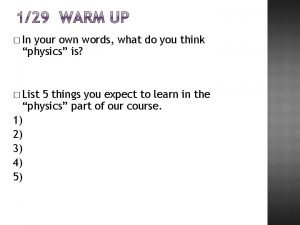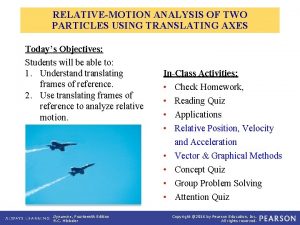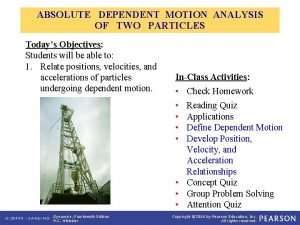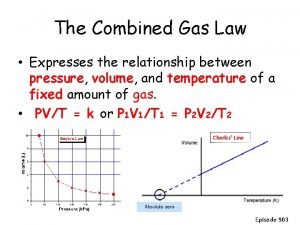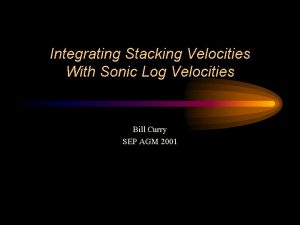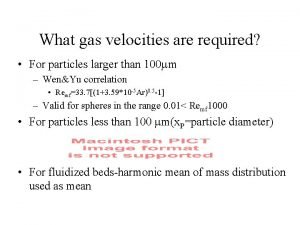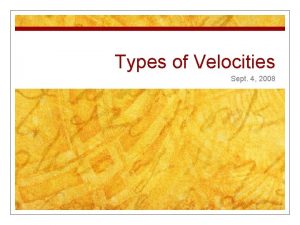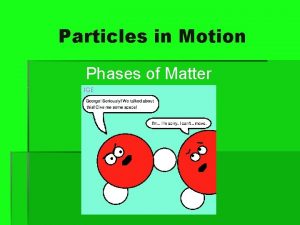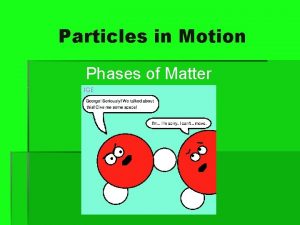Particles in Motion Particles In Motion Velocities and









- Slides: 9

Particles in Motion Particles In Motion

Velocities and Speeds of Particles The Maxwell-Boltzmann Distribution ► Consider a Cartesian system with orthogonal axes (x, y, z) ► N(vx)dvx = number of particles having a velocity component along the x axis between vx and vx+dvx ► N = Total Number of particles ► m = mass of the particle ► Then: Particles In Motion 2

Continuing Let Then This is just a gaussian. Particles In Motion 3

Gaussians ► Generally a gaussian is ► The center is at x = 0 and the amplitude is A § To move the center: -a(x-x 0)2 ► FWHM: y = A/2 (but remember to double!) ► This is the Formal Gaussian Probability Distribution where σ is the standard deviation Particles In Motion 4

Continuing some more The y, z contributions are The fraction with components along the respective axes vx+dvx, vy+dvy, vz+dvz Particles In Motion 5

Summation and Normalization Probability Distributions Integrate to 1 Or The normalization on the gaussians is α Now consider the speeds of the particles: ==> v 2 = v x 2 + v y 2 + v z 2 Let us go to a spherical coordinate system: ==> dvxdvydvz → 4πv 2 dv Particles In Motion 6

The Speed Distribution Note that α is just the most probable speed NB: Velocities are normally distributed but the speeds are not! Particles In Motion 7

Gas Pressure Another way to do it! ► Pressure ≡ rate of momentum transfer normal to surface ► Consider a 3 d orthogonal axis system § If the particles are confined to move along axes, then 1/6 are moving along any one axis at a single time (on the average) § Let the speed be v § The number crossing a unit area per second on any axis is: Nx+ = 1/6 Nv and Nx- = 1/6 Nv. § Therefore the total number of crossings is 1/3 Nv Particles In Motion 8

Gas Pressure II Now use the Maxwell Boltzman Distribution ► Pressure = “N * mv” ► Therefore Px = 1/3 mv 2 N ► Go to a Maxwellian speed distribution: One can either invoke the Perfect Gas Law or one can derive the Perfect Gas Law! Particles In Motion 9
 Triangle of velocity
Triangle of velocity Distance vs. displacement
Distance vs. displacement Triangle of velocities
Triangle of velocities Motion of particles in solids, liquids and gases
Motion of particles in solids, liquids and gases Relative motion of two particles using translating axes
Relative motion of two particles using translating axes Rectilinear motion of particles
Rectilinear motion of particles Solid particles
Solid particles Absolute dependent motion analysis of two particles
Absolute dependent motion analysis of two particles Active rom
Active rom Relationship between volume and temperature
Relationship between volume and temperature

